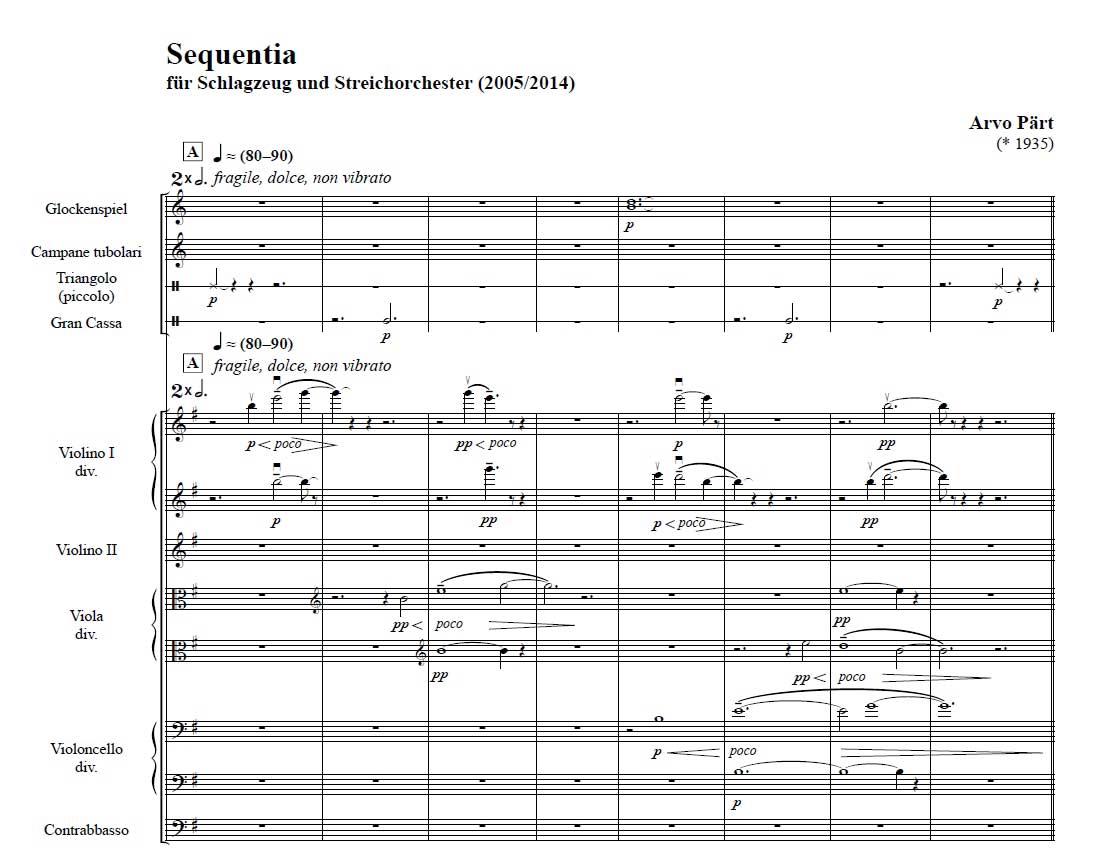Scored for
string orchestra and percussion
Duration
5 min
Short description
Arvo Pärt: "The basis for Sequentia is the subtle descending violin line, comprised like a chain of three-note links. The other orchestra groups follow it in succession as a prolation canon." This old, traditional, and tightly structured principle of musical form that the composer has used in many of his earlier works such as Tabula rasa, Cantus in Memory of Benjamin Britten, Arbos and others, is characterised by Arvo Pärt like this: ‘It is like one particular yarn in a carpet. The pattern emerges if all the layers work together.’
Sequentia, instructed to be performed fragile and dolce, takes the listeners to a particularly tender and fragile sound world, wherein movement and stillness, t…
World premiere
12.05.2015
Noblessner's foundry, Tallinn, Estonia
Stage production: Adam's Passion
Tallinn Chamber Orchestra , Tõnu Kaljuste (conductor), Robert Wilson (staging, design, light concept)
Performances
27.03.2018
Stage production: Adam's Passion
Konzerthaus Berlin, Berlin, Germany
Tallinn Chamber Orchestra , Tõnu Kaljuste (conductor), Robert Wilson (staging, design, light concept), Tõnu Kaljuste (conductor), Robert Wilson (staging, design, light concept), Konzerthausorchester Berlin
